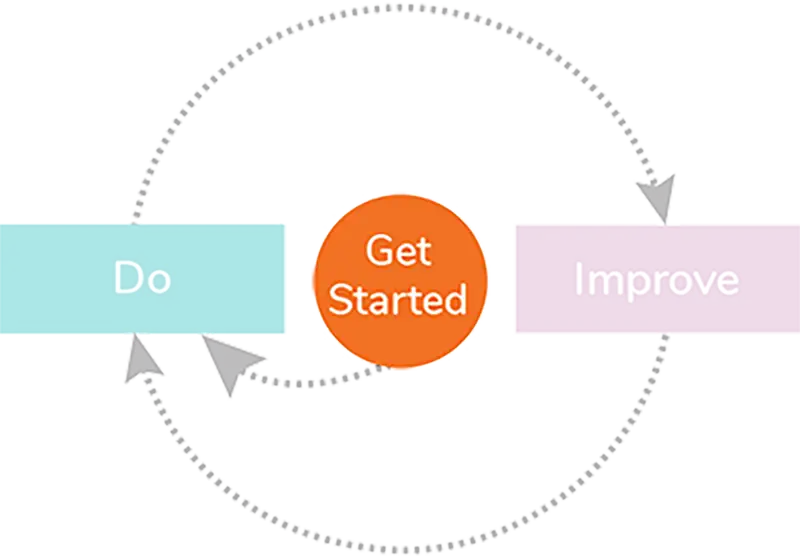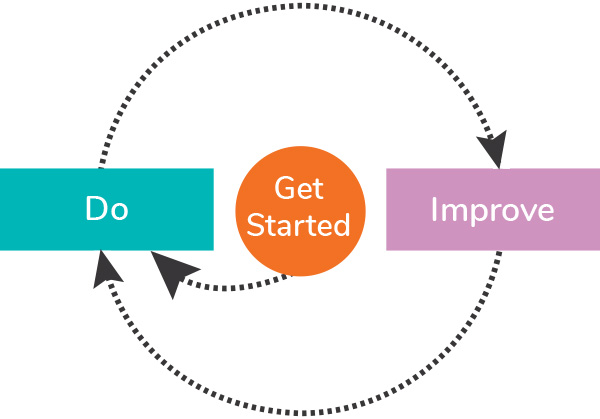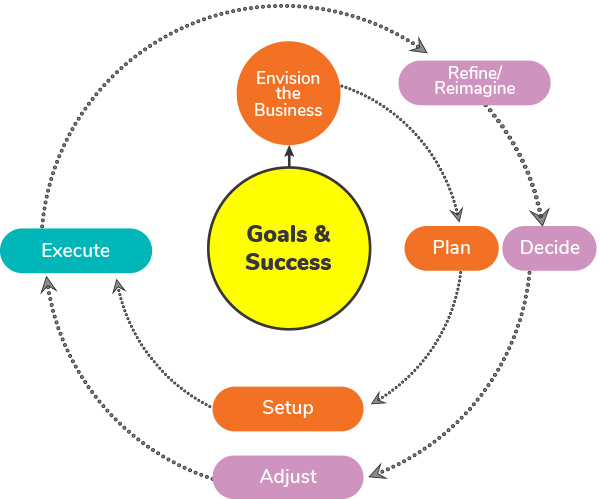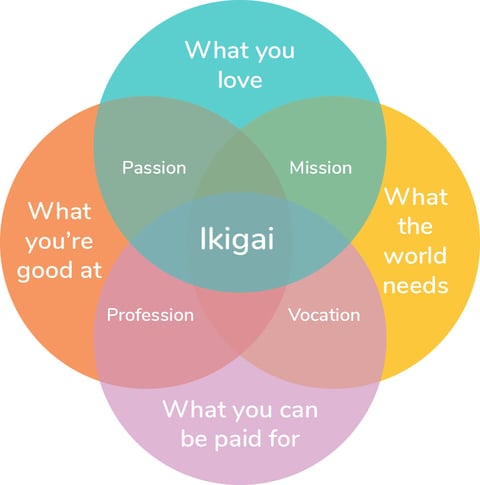5 min read
The Solopreneur Success Cycle: Phase 1 - Getting Started
![]() Joe Rando
:
Aug 1, 2022 4:00:00 AM
Joe Rando
:
Aug 1, 2022 4:00:00 AM

What is the Solopreneur Success Cycle and Why Do I Need It?
If you listen to the One-Person Business Podcast, you have probably heard of the Solopreneur Success Cycle. If not, well... here you go. This is a basic, very high level overview of the process. For more detail, check out the podcast series.
So many people are starting one-person businesses - freelancers, consultants, coaches, contractors, e-commerce, affiliate marketers… the list is huge. I developed the Solopreneur Success Cycle because a lot of the content out there for solopreneurs focuses on:
- How to make $10K / $50K / $100K per month as one-person business without actually working much
- How to get pumped up about being a solopreneur
While these are not without value, most people do start a one-person business mainly to take control over their lives (including me when I started my first solo business). And to do that, the business has to do 3 things:
- Give them a sufficient income to pay the bills and save for the future
- Give them the lifestyle they want
- Be the kind of business they want to run
But hitting this trifecta rarely happens by accident. To have a shot at this, there needs to be a lot of planning and planning means there needs to be a process, hence the Solopreneur Success Cycle. Today we’ll take a high-level view of the first phase, but there’s lots of stuff in the podcast, more blogs coming and other content to help you imagine or reimagine your one-person business.
Who’s It Actually For?
It is estimated that over 36 million people in the US will start one-person businesses in the next 5 years; that will mean that over 50% of the work force will be involved in a one-person business. The Solopreneur Success Cycle is for them.
But it’s estimated that there are currently 50 million one-person businesses in the US. Not all these people are happy with their business, in terms of profitability, work satisfaction, and/or lifestyle. The Solopreneur Success Cycle is for them too, as gives them a process to review and reimagine their business.
The Phases and the Steps
Take a look at Figure 1. It shows the Phases of the Solopreneur Success Cycle. It is not a shocking process, I know. But that’s good news! This is NOT rocket science. It’s simply process of:
Phase 1: Starting as you mean to go
Phase 2: Doing
Phase 3: Improving (then going back to Phase 2)

Figure 1. Solopreneur Success Cycle Phases
This results in a business that is regularly reviewing and improving itself. This is critical for a few reasons:
- You’ll never get it right the first time
- The world is constantly changing and you will need to adapt
- You are changing and need to make sure the business continues to be one you want to run
I’ve broken the Phases into Steps as shown in Figure 2:

Figure 2. The Steps of the Solopreneur Success Cycle
This looks a little more complicated, but I think if you review it carefully, you’ll see it makes sense.
This process is like this:
Phase 1: Start as you mean to go
Step 0: Define Goals and Success
Step 1: Envision Your Business
Step 2: Plan Your Business
Step 3: Set Up Your Business
Phase 2: Do
Step 4: Execute
Phase 3: Improve
Step 5: Refine/Reimagine Your Business
Step 6: Decide What to Change
Step 7: Adjust Your Business (then back to Step 4)
So let’s look briefly at each step. There’s lots more detail in the Solopreneur Success Cycle episodes of the One-Person Business Podcast and more coming here and elsewhere. You can also ask me questions directly in my section of the LifeStarr Community.
Step 0. Define Goals and Success
I call this step the magic ingredient. So many people start a business with this vague notion that it will be awesome but never thinking through what they really want or need it to be so as to be worth doing. Doing this step drastically increases your chance of being glad you started your business.
You need to ask yourself some very important questions. And you need to answer them honestly.
- What is the reason you want to start a one-person business?
- What is your life like now versus what you would like it to be?
- What will you do for the world (or at least for your customers)?
- What are your specific and measurable goals?
Answering these questions is the most important aspect of this exercise since everything else flows from it. You will constantly be referring back to these as you make decisions to be sure you're going in the right direction.
Step 1: Envision Your Business
Some people know exactly what they want to, but many more know only roughly what kind of one-person business they should start or aren’t sure at all. Even people who think they know can benefit from the exercise of exploring ideas.
We use a concept called Ikigai (shown in Figure 3) to help would-be solopreneurs figure out a business that makes sense for them. Ikigai helps you find a business that:
- You love
- You’re good at
- You can be paid for
- The world needs

Figure 3. Ikigai is the intersection of 4 important
considerations when starting a business
This will put you in the right direction out-of-the-gate. And moving in the right direction is a lot more important than moving fast.
Step 2: Plan Your Business
Once you know what you want to do, you need to plan how you will get it up and running. Yes, some of this involves concrete aspects of your business, whatever it may be. But there are some more subtle aspects that need to be considered as well, like:
Defining Your Product:
What problem are you solving?
What do you sell to solve them?
Defining Your Target Customer
Who are you selling to?
Where are they?
How will you reach them (paid advertising, content marketing, search engines, billboards, etc.)
Defining Your Competition
Who are your competitors really?
How do you compare to them?
How do you price against them?
Defining Your Business
How will you position yourself in the market?
What will you call your business?
What specifically do you need to get set up?
What specifically jobs will need to be done to run your business
Yes, there’s a lot to planning a business, at least if you want to do it correctly. And that shouldn’t be a surprise. But this process is infinitely easier than waking up one day running a business that is failing or, perhaps even worse, thriving and yet you hate it.
Step 3. Setup Your Business
Now it's time to make all your plans reality. Planning and then setting up your one-person business can be an extensive process but by putting planning before doing, you greatly increase your chances of being happy with the final result. The important thing is to take it in pieces and use the LifeStarr Community as well as our content as a resource when you get stuck.
In this step, as in the last, much of the process will involve things specific to your business. There are some general aspects that all new businesses need to consider, usually in this order:
Incorporate your business
You will need this to do a lot of the setup tasks.
Consider and LLC and Sub-chapter S-corp.
Look for show stoppers
Find things that need to happen that are not guaranteed to be do-able.
Start with the cheapest and work through them to the most expensive.
Create your messaging to your target customers
TALK ABOUT THEM, not you!
Focus on pain points and how you solve them.
Define your brand
Visual design elements like logos
Design of your product, if applicable
How you interact with your customers
Define your website
Define what it needs to do (SEO, blog, capture emails, etc.)
Decide whether to hire a pro or do it yourself
Build your website
Decide on a platform to build it on and a template to use (if doing yourself)
Design it - figure out how it will look before building
Build it
Set up your marketing program
In Step 2, you decided how you would reach your customers. You now need to set up these processes.
Set up your sales process
This will vary greatly depending on your offering. It may be a web page with a place to buy your product or you may be meeting face-to-face multiple times. Whatever it is, make if a process that you follow.
Set up your fulfillment process
Obviously, this is again entirely dependent on your specific business. But make it into a process that is easy to execute to maximize efficiency.
Some other things that need to happen are:
Open bank accounts
Set up or arrange for bookkeeping and accounting
Tax planning (this is important and can save you a lot of money or at least keep you out of trouble with the IRS)
Next Week
Next week, we’ll look at Phase 2: Doing. Be sure to subscribe to the Solopreneur Starr Blog to get notified.
Want access to the entire Solopreneur Success Cycle? Check it out here!
THE BUSINESS HELP YOU WANT TO BE DELIVERED TO YOUR INBOX.
Posts by Tag
- Featured (28)
- Focus (10)
- Solopreneur Health and Wellness (10)
- Productivity (9)
- Increase Money, Not Hours (8)
- solopreneur success cycle (7)
- Independent Contractors (6)
- Inspiration (6)
- Goals (5)
- Marketing for Solopreneurs (5)
- Planning Your Business (5)
- Community (3)
- Self-Care (3)
- Success (3)
- storytelling (3)
- Legal (2)
- Motivation (2)
- Relationship Building (2)
- Stress (2)
- Collaboration (1)
- Finance (1)
- Leadership (1)
- Mindfulness (1)
- Project Management (1)
- Solopreneur Challenges (1)
